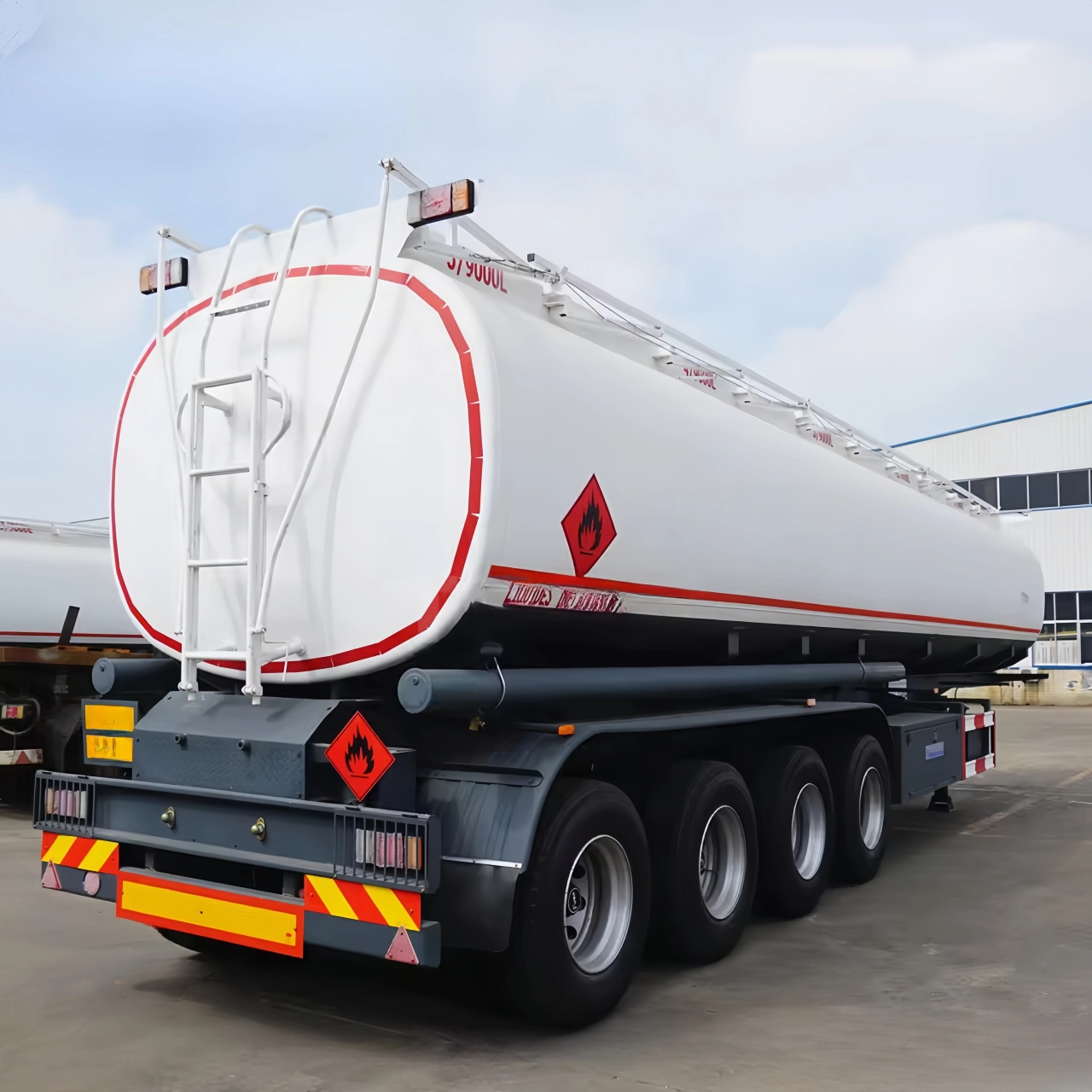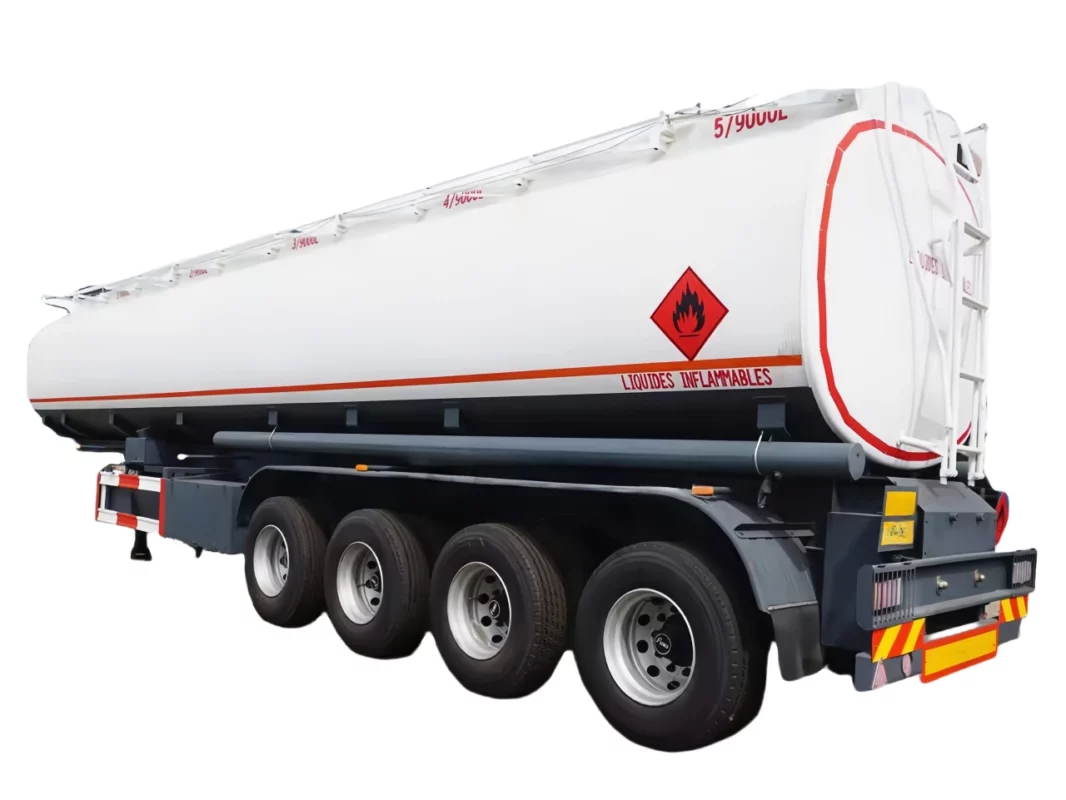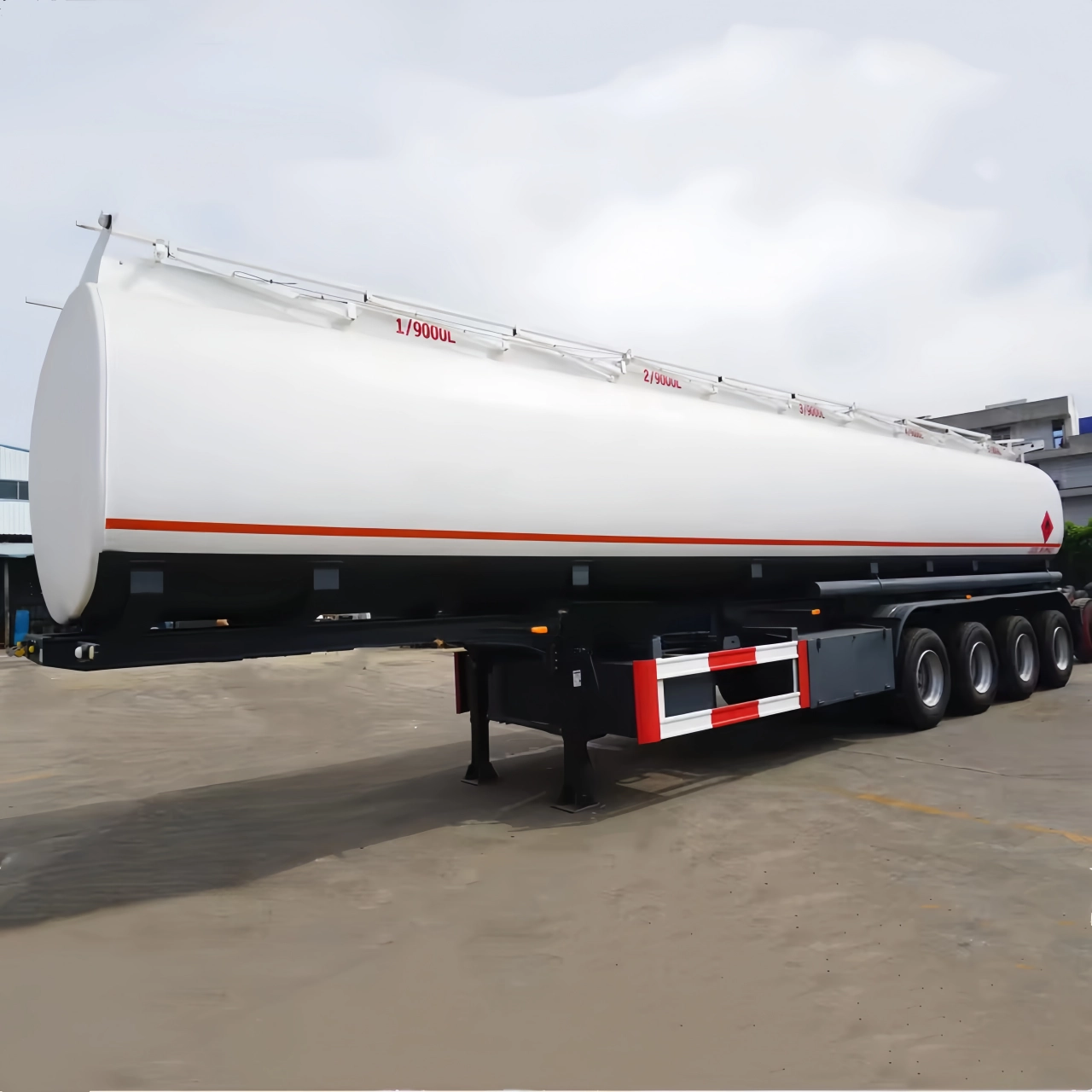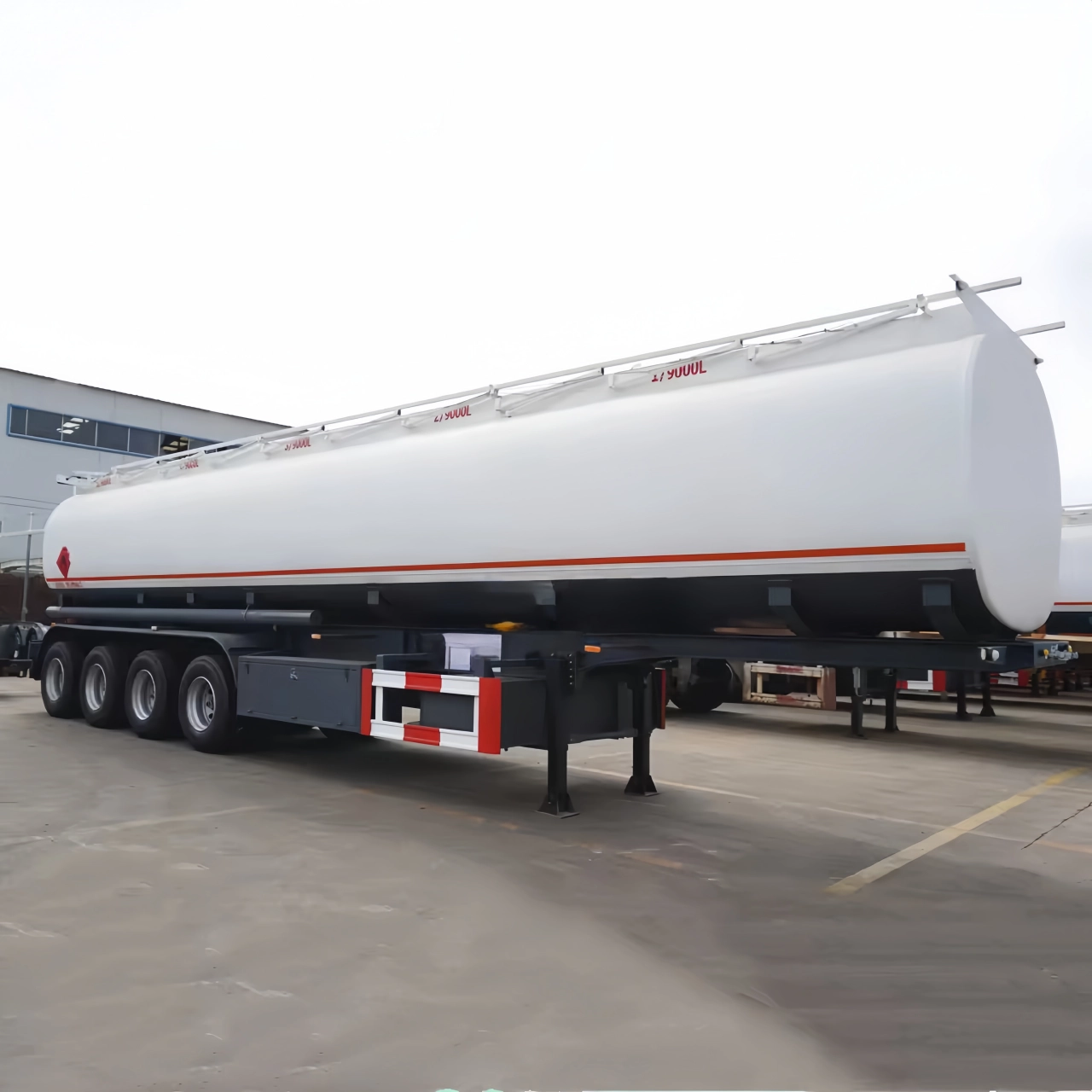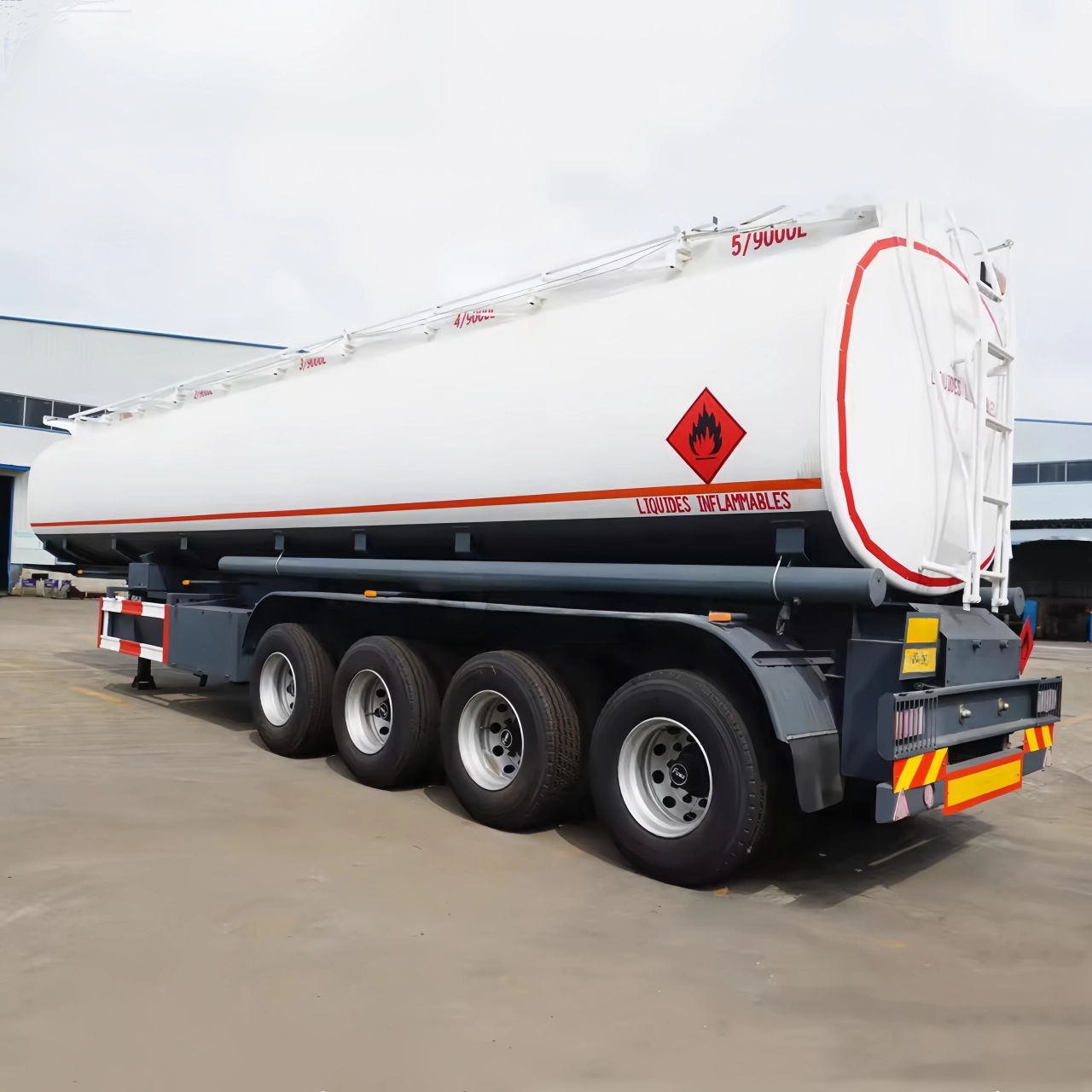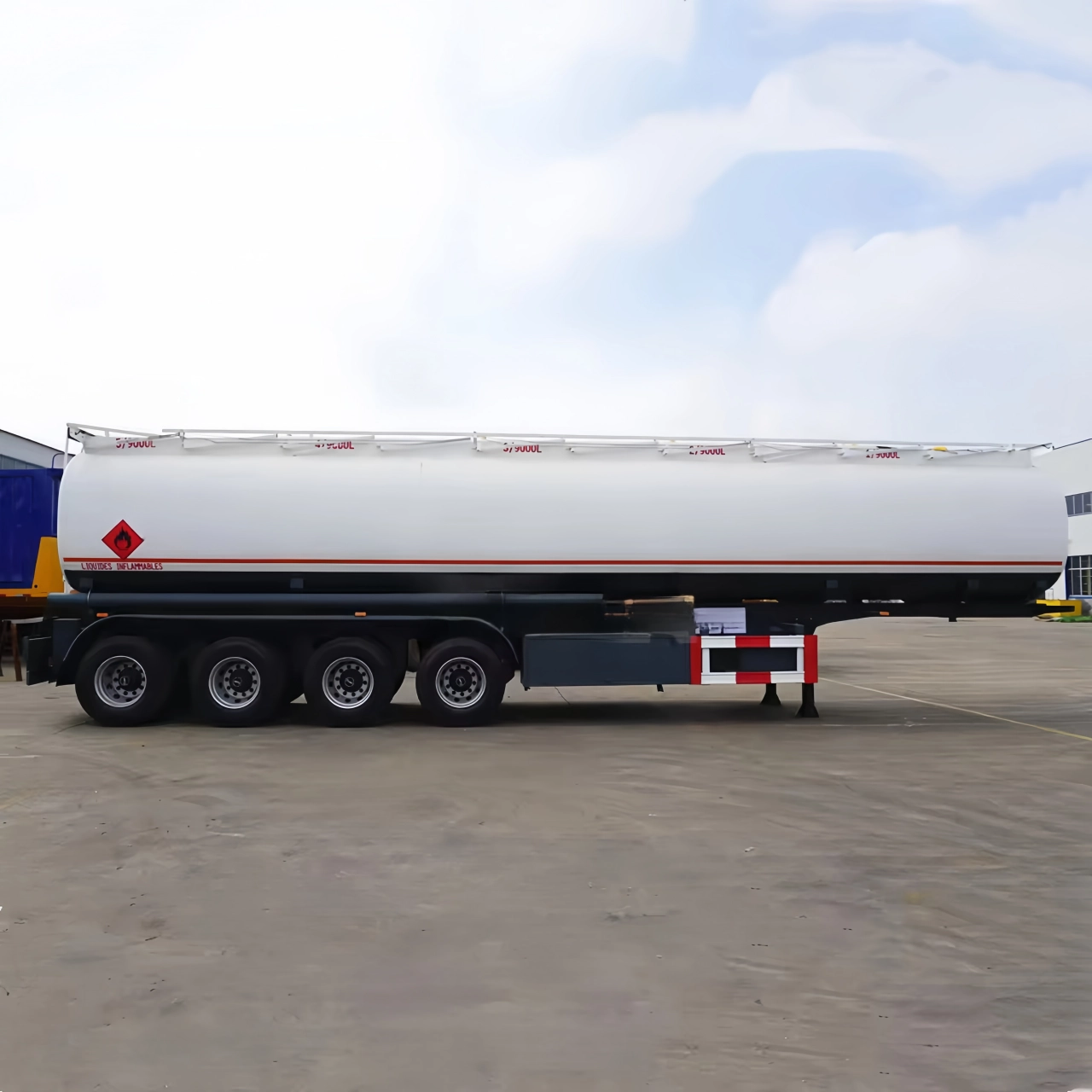Fuel tanker trailers are a common sight on highways and at industrial fueling stations. These specialized trailers are essential for transporting large quantities of liquid fuels like gasoline, diesel, and aviation fuel across long distances. But how big is a fuel tanker trailer exactly? The answer depends on several factors, including the type of trailer, the material it’s made from, and the regulatory standards in its region of operation. In this article, we’ll explore the different sizes of fuel tanker trailers, their design specifications, and what determines their carrying capacities.
What is a Fuel Tanker Trailer?
A fuel tanker trailer, also known simply as a fuel tanker or tank trailer, is a semi-trailer designed to transport fuel in bulk. These trailers are typically connected to a truck tractor and come equipped with cylindrical tanks that are designed for the safe transport of flammable liquids. Common materials used in construction include aluminum and stainless steel, which offer corrosion resistance and strength while keeping the overall weight manageable.
Fuel tanker trailers are used by fuel distribution companies, petroleum product suppliers, military logistics, and even large industrial operations with private fueling needs. The size and design of these tankers can vary significantly depending on their application.
Typical Dimensions of Fuel Tanker Trailers
The physical size of a fuel tanker trailer can vary, but most fall within a fairly standard range to comply with road safety and transportation regulations. Here are the typical dimensions:
- Length: 10 to 15 meters (33 to 50 feet)
- Width: 2.4 to 2.6 meters (about 8.0 to 8.5 feet)
- Height: 3.5 to 4 meters (11.5 to 13 feet)
These measurements can vary slightly depending on the country and its legal requirements for road vehicles. For example, in the United States, tankers must conform to Department of Transportation (DOT) regulations, while in Europe, tankers must comply with ADR (Accord Dangerous Routier) standards.
Fuel Tanker Trailer Capacity
When people ask, “How big is a fuel tanker trailer?” they often mean its capacity—how much fuel it can carry. Fuel capacity is typically measured in liters or gallons. The capacity of a fuel tanker trailer varies depending on its configuration, including the number of compartments and the specific shape of the tank.
- Small Fuel Tanker Trailers:
These have a capacity ranging from 10,000 to 20,000 liters (approximately 2,600 to 5,300 gallons). They are often used for short-distance urban deliveries. - Medium Fuel Tanker Trailers:
These units carry between 25,000 and 35,000 liters (6,600 to 9,200 gallons). They are common for regional fuel distribution. - Large Fuel Tanker Trailers:
The largest trailers can carry up to 45,000 liters (around 12,000 gallons) or more. These are primarily used for long-haul fuel transport and are designed for maximum efficiency.
Compartmentalization of the Tank
Most fuel tanker trailers are not just one large tank; they are divided into multiple compartments. A standard trailer may have 3 to 8 compartments, allowing the driver to transport different types of fuel (e.g., diesel and gasoline) at the same time or to split a single type of fuel into manageable loads.
Each compartment usually ranges from 3,000 to 8,000 liters (800 to 2,100 gallons), depending on the total capacity and the number of divisions. Compartmentalization is crucial for safety, weight distribution, and preventing fuel surges during transportation.
Factors Influencing Fuel Tanker Size
Several factors influence how big a fuel tanker trailer is:
- Regulations:
Each country or region has its laws that dictate maximum trailer dimensions and weight limits. For example, the U.S. Federal Bridge Formula and European axle load regulations can limit the maximum size of tankers. - Material Used:
Trailers made from aluminum are lighter and can carry more fuel without exceeding weight restrictions. Stainless steel is heavier but may be preferred for certain fuel types. - Axle Configuration:
The number of axles affects the legal load a trailer can carry. More axles generally mean more weight can be distributed legally, allowing for a larger tank capacity. - Road Type and Terrain:
Tankers designed for urban delivery are smaller and more maneuverable. Larger units are typically reserved for highway use where space and road conditions allow for bigger vehicles.
Safety and Design Features
Fuel tankers are subject to stringent safety regulations because they transport hazardous materials. Some important safety features that affect their size and construction include:
- Surge Baffles: Internal panels that reduce the movement of fuel inside the tank, which helps prevent rollovers and improves handling.
- Bottom Loading Systems: Allow the tank to be filled from the bottom rather than the top, reducing spillage and vapor emissions.
- Emergency Valves: Installed in each compartment to prevent fuel leaks during accidents.
- Overfill Protection: Sensors that prevent the tank from being filled beyond its capacity.
All of these features can influence the design and effective carrying size of a fuel tanker trailer.
Specialized Fuel Tanker Trailers
Some fuel tankers are built for very specific tasks, which can affect their size:
- Aviation Fuel Tankers: May have additional filtration systems and strict anti-static measures, influencing tank size.
- Off-Road Tankers: Designed for mining or military operations, these tankers may be shorter but are built for rugged environments.
- LPG Tankers: Transport liquefied petroleum gas and must be built to withstand high pressures. Their tank shape and wall thickness will differ, affecting internal volume.
Conclusion
The size of a fuel tanker trailer is not a one-size-fits-all answer. Trailers vary widely in dimensions and capacity depending on their use case, construction materials, regulatory environment, and the type of fuel being transported. A typical fuel tanker trailer can range from 10,000 to 45,000 liters in capacity, with physical lengths between 10 and 15 meters. Whether used for local deliveries or long-distance transportation, fuel tanker trailers are a marvel of engineering designed to optimize safety, efficiency, and capacity.
Understanding their size helps not only those in logistics and fleet management but also gives insight into how our fuel distribution networks function every day across the globe.
